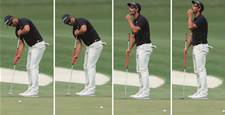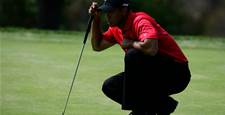World No.1 and 2015 PGA champion Jason Day talks about his swing and where the power is generated to hit drives up to 320 metres, and what you can do to hit drives longer than you are now.
EXCLUSIVE BY WORLD NO.1 JASON DAY
The majority of amateur golfers mistakenly believe that more power in the swing is simply an increase in clubhead speed that will result in longer drives. How they try to achieve that gets them into trouble.
The application and delivery of this power to apply pressure to the golf ball correctly is just as important as increasing clubhead speed. Ideally, you need to get a square clubface to the ball at impact with the club travelling at maximum speed towards the target.
Here, World No.1 and PGA champion Jason Day talks about his swing and where the power is generated to hit drives up to 320 metres, and what you can do to hit drives longer than you are now.
THE IMPORTANCE OF YOUR STANCE
To hit with power you need to have a wider stance. When I’m really trying to rip a drive, my stance is wider than my shoulders just because I know that feels athletic and I know I can just get at it and ‘kill’ the ball.
In saying that, you don’t want your stance to be too wide to where you can’t turn. But you’ve got to find a width that feels comfortable and slightly wider than your shoulders.
Like the old saying that you’re trying to shoot a cannon out of a canoe, well I’d much rather shoot a cannon from a ship than a canoe. Why? It’s a nice stable base. If you’ve got a little base, you’ll be kind of wobbly and it’s not going to be accurate when you try to shoot something out of that little canoe.
Sure, the narrower your stance the more you’re able to turn. That can be a good thing but then you lose power as well.
So you’ve got to have a good, athletic stance. And that stance must be stable so you don’t sway. If you’re wobbly and swaying it’s impossible to consistently find the sweet spot.
The number one thing for amateurs is to get centre contact on the club. If you’re stable with your legs and flex, then you can turn through the ball and hit the shot. But when you’re not balanced, you fall back on the swing and you lose power and there is no sweet-spot contact.
Simply, I turn behind the ball with my shoulders on the backswing and from there I can just can unload and bump a little bit with my hips and swing through.
UNIFORMITY OF THE ARMS
My arms work as a unit on the backswing. When I’m taking the club back I try to take it back as far as I can, so the width of the backswing is huge.
The width of your swing needs to be big on the takeaway so when you’re swinging back down into the ball you can lag the club down and swing into the ball on an inside-the-target-line swing path.
Every time I played, even as a kid, when I first took the club away it has always been pretty much all shoulders and arms. They all work together as one. Then, from there, I can fold up the right arm and make sure I still have good width because width equals power and power equals distance.
If your arms are close to your body does it look like a powerful move? No, not when they’re really close. But, when they’re extended, it just looks so much more powerful.
You’ve got more room to work with through the hitting zone and you’ve got more power into impact to work through so you can just get in there and rip it.
WORK ON YOUR FLEXIBILITY
I have no doubt if you work on your fitness, you will definitely see an increase in your driving distance.
It’s not about throwing weights around a gym or running miles or riding a bike. Most amateurs are not flexible in certain spots – they get very, very tight, which is no good for hitting your driver its maximum distance.
For amateur golfers, in terms of their golf fitness, I think it should be more about flexibility and stability.
Why? Well you’ve got to be able to turn behind the ball and keep your hips pretty still. When amateurs ‘turn’ they’re swaying side to side. Everything – hips and shoulders – go as one. When I’m taking it back there’s a little bit of hip turn but there’s about 90 degrees of shoulder rotation.
If you were going to throw a ball as hard as you can like a baseball pitcher, you wouldn’t stand flat-footed and expect to generate any speed. You need to step into it. Watch how a pitcher (or a golfer throwing their ball to the crowd, inset photo) will make sure everything leans back so then they’ve got the separation between hip and shoulder turn. From there they uncoil and everything, including the arm, lags behind. Their flexibility allows them to do this.
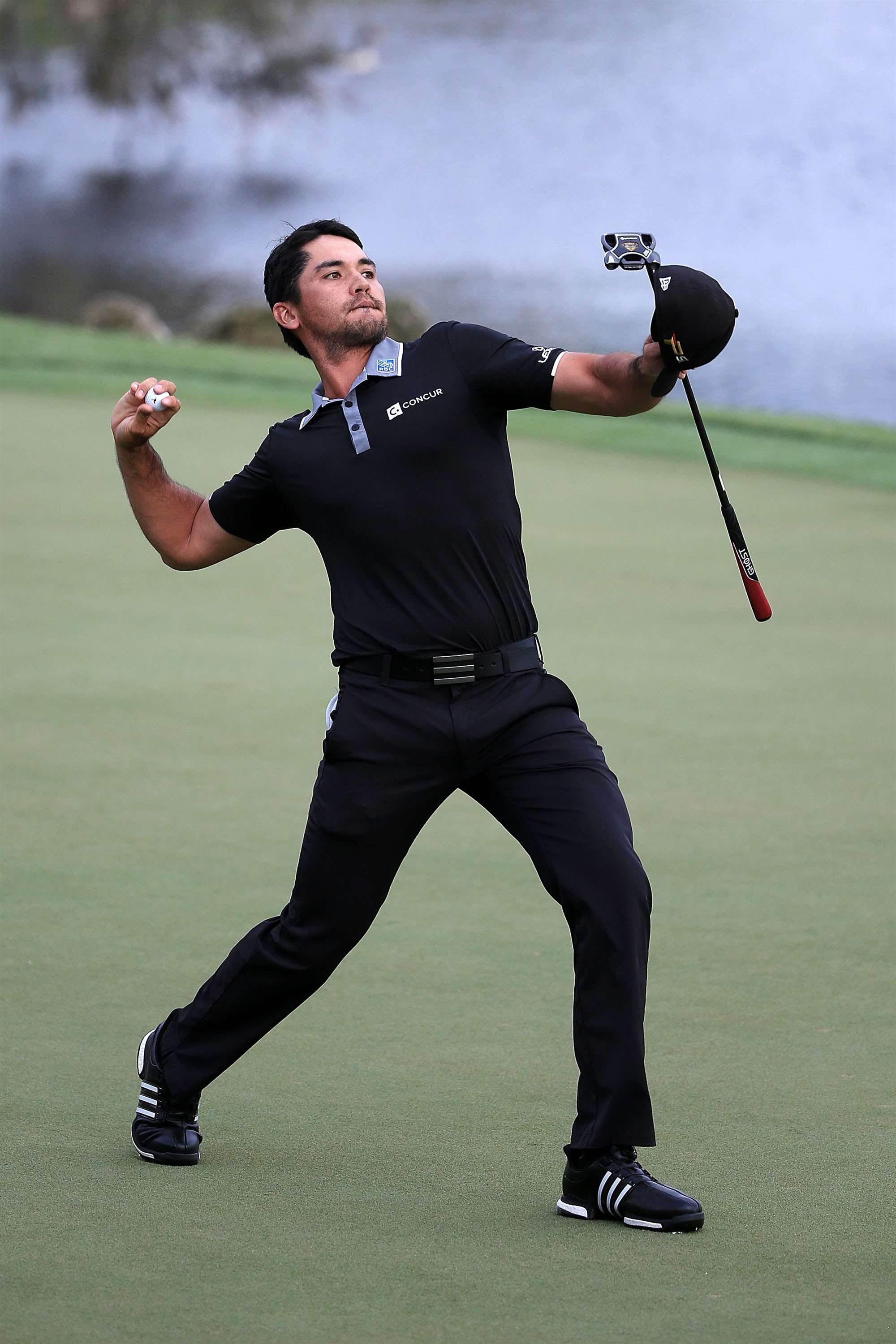
That’s what I’m getting at with the gym. You need to work on the overall flexibility of your body and you will see a drastic improvement in your distance.
Overall, flexibility comes first for amateurs. When I look at amateurs every week I feel like most have no flexibility at all. Improve your flexibility and you’ll improve your power and distance from tee to green.
PLUG THE POWER LEAK
A lot has been written over the years about the X-factor of a golf swing. The X-factor is basically the turning angle difference between your shoulders and hips. The bigger the angle differential, the more power you will be able to generate.
For example, if your shoulders turn 90 degrees (so your back is facing the target) and your hips turn back 30 degrees, you’ve got an X-factor of 60 degrees.
If you don’t get the X factor you need between the hips and the shoulders, you will never generate lots of power to hit the ball a long way. When I see a golfer turning their shoulders about 45 degrees, it is not much of a turn, so there is no real difference in the turn angle of the shoulders and hips. In short, there’s no explosive twist, no X-factor. There has to be that separation and twist.
Where a lot of golfers lose power is by coming ‘over the top’ because they don’t have that initial move where you can slot the club back on the inside. If you swing like that, you may start turning your hips but they develop no separation in the turning angle of the shoulders and hips. There’s no rubber-band uncoiling movement because the first move down is with the arms.
THINK IN OPPOSITES
For most of you reading this, one of the hardest things to do is to get your club moving on a better swing path into and through impact. This usually means getting rid of that ‘throw-it-over-the-top-move’ where you hit the ball left-to-right (for right-handers) with a big old cut. You not only miss the fairway, you don’t hit it very far either.
So for you, it’s imperative to think in opposites. To hit less of a slice, you actually have to feel like you are going to hit the ball to the right.
Easier said than done, right? When you’re hitting cuts and realise you’re going right, you think, ‘Well I don’t want to do that,’ so you align even further and further left and you see the ball moving right even more after impact. So you keep aiming further left and the bigger the slice to the right becomes.
You’ve got to work it in opposites. Golf is all about opposites.
Coming and going on the range, that’s where you need to be practising that swing and feeling like you’re attacking the ball from inside the target line, and getting the hands inside that line too.
When you have the club outside the line on the descent, you don’t even give yourself a chance to release the club through the ball. Coming from the inside, you can release the club and all its stored power as you move through impact.
LESS SPIN, MORE DISTANCE
When I talk about driving, I try to feel like I’m not only hitting the ball from the inside of the target line, but I’m also hitting the ball on the up – that is, the clubhead has already bottomed out in the arc and is swinging up.
When you do that, then you can get more power … every time.
Most amateurs try to muscle the ball and, in doing so, they mistakenly make their first move down with their arms, which throws the club away (casting) and onto the wrong swing path once they hit down from the top of the swing.
Hitting down into the ball with your arms sees the clubhead come into impact on a steeper angle. When you hit down on the ball like this it creates a lot more spin (backspin and sidespin) and robs you of distance and produces the high and right kind of ball flight and shot shape you don’t want to see.
But if you hit the ball ‘on the up’, there is less spin and what spin there is creates a right-to-left shot shape … a draw (for right-handers). You get a lot more distance on the draw move, which is why I try to get on the inside and hit a big, high draw.
HITTING THE BALL HARD
I try to draw the ball all the time and I try to hit it as hard as I can every single time.
Personally, if I’m going to hit it in the junk, I’m going to hit it 350 yards into the junk, I’m not going to hit it 300 yards in the junk.
When I’m getting up there on the tee I’m trying to rip the cover off the ball every time. I’m just trying to get it down there as far as possible because if I have a shorter club in, then I can get at or around a green with my second and then get up and down. I’ve got a shorter iron in my hand with more loft, even if I am hitting out of the rough.
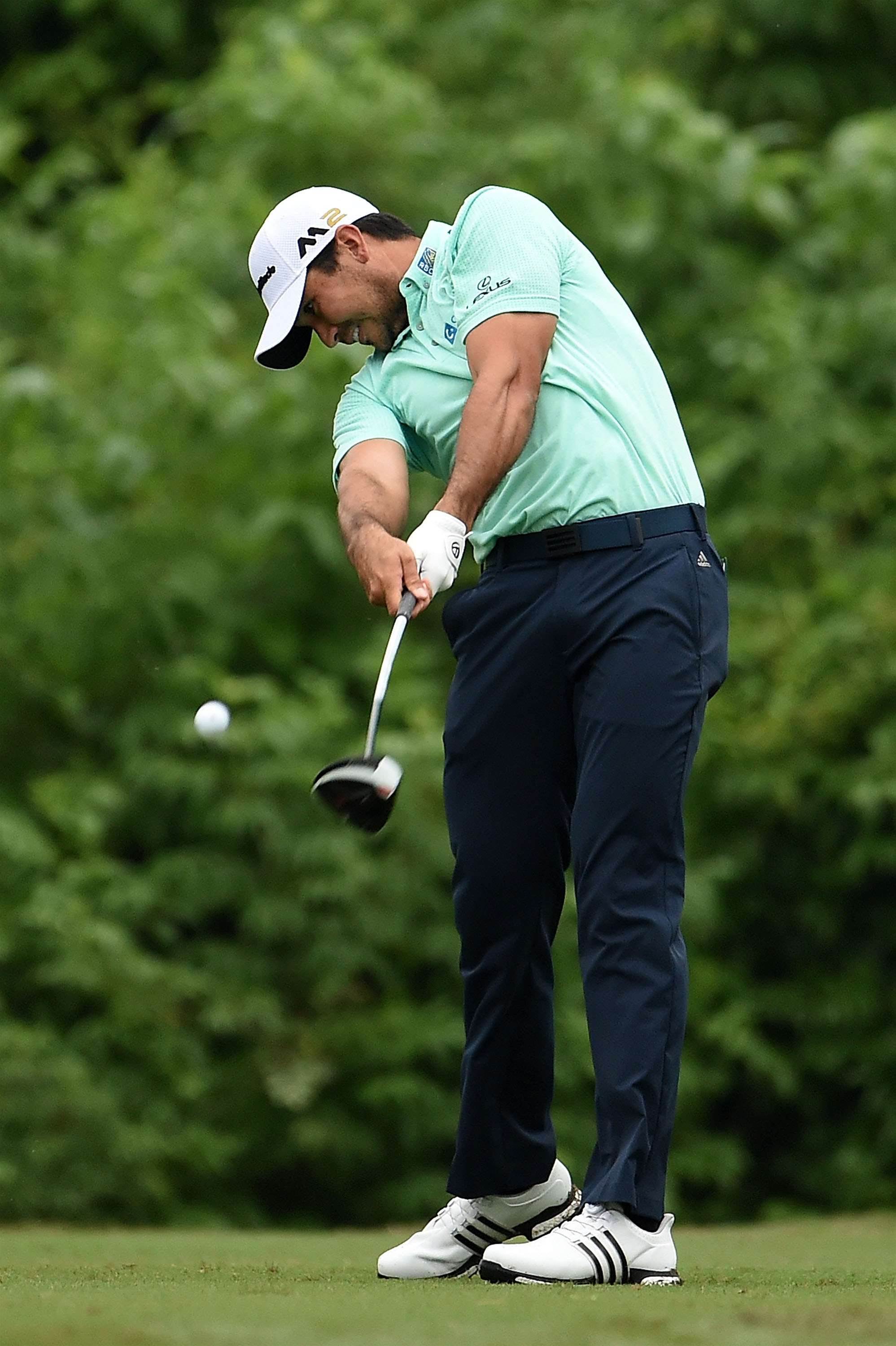
If you want power it’s all about the draw. The draw is clearly the most powerful and the fade is the most accurate.
What I do think about is pushing my driver. You want the driver to naturally extend back, but
I try to keep my driver as low and long and as far away from my body as possible. You want to try to feel like your arms are extending as far back as they can.
For me, part of this feel is releasing the club. One big power release is being able to rotate your hands. If you are one of those guys who cuts the ball all day, you’re just holding the release off … there’s no hand rotation. You don’t know what a true release feels like. That’s where getting on the range and getting to feel
like you’re starting it right and fully releasing the club is key.
IMPROVEMENT AND PRACTICE
Everyone’s greedy, it’s really true. Everyone wants more distance. We certainly can improve from the technology we currently have.
You can definitely do that but let’s face it, it’s about the self-improvement of trying to get better with your golf game and trying to get better with your body. Unfortunately those things go hand in hand.
You’ve got to improve your body first to get better at golf and to be able to hold the stability and force through a golf swing. If you’re into that and you want to improve your driving, specifically the length, you would go with that first.
Fitness, stability, and functional movement is obviously key and from there working on your golf swing and making sure you’ve got sound fundamentals from there.
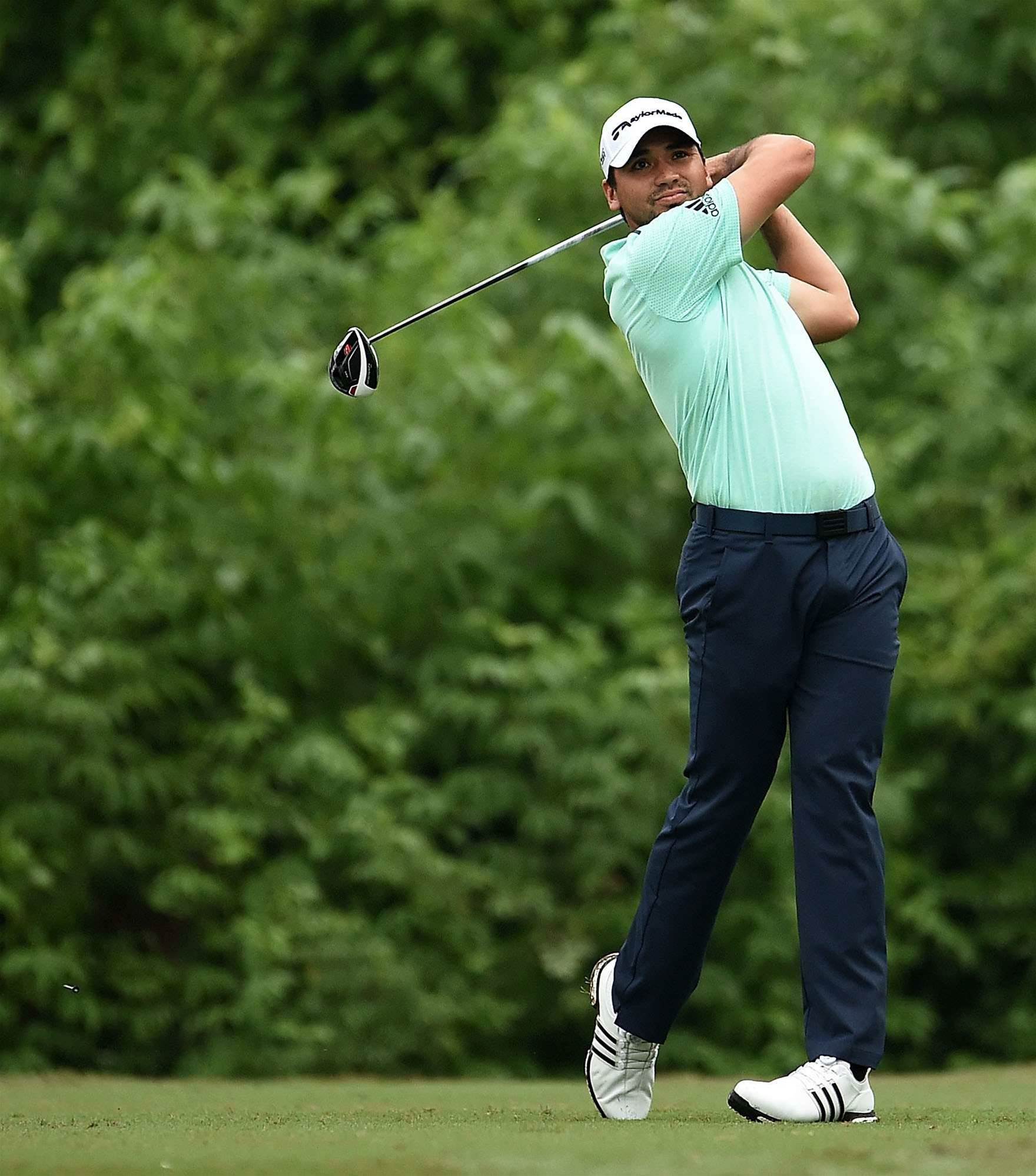
But it’s kind of hard to say for a normal amateur, “Well, five days a week we’ve got to go to the gym and work on a golf swing.” Obviously with your daily work, if you want to improve you need to spend an hour-and-a-half on your swing each day. So it’s very time consuming when it comes to improvement. You have to be open to it.
If you really want drastic improvement straight away, you’ve got to work on it every day, but if you want to improve even gradually then two to three times a week improve your health and swing. That’s not much. Maybe on the weekend you can find a day and then maybe more time in the middle of the week – so you’re pretty much good to go.
It may take a little bit longer but things happen like that because you don’t get to work on it as much as I get to work on it. Repetition, it’s like anything – the only way to get better at something is to practise consistently.
* Interview by Garrett Johnston
Related Articles
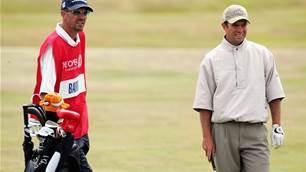
Forged at Federal. Part 2

Feature story: Forged at Federal




